Best Free Daw Software For Mac. Apple Garage Band is one of the best DAW software for Mac computers. It is not only beginner friendly software but also it is free to download. It has a collection of decent instruments and high quality audio loops that can help you make cool music from scratch.
The best thing is its built on 64Bit architecture hence deliver a crystal clear sound quality. I recommend it as the best free DAW software in the universe. Cakewalk by BandLab Features. 20 Best FREE DAW Software for Windows & Mac in 2021. Best free DAW for Mac: GarageBand. Supported platforms: Mac only. Ableton live lite. Here is our top 10 list of free DAWs, with more detailed information about each one: 1. If you own a Mac, iPhone or iPad then you can download Garageband absolutely free. Garageband is a stripped down version of Apple’s Professional DAW Logic Pro X ($199).
For those looking to jump into the world of digital audio for the first time, deciding on a DAW can be a daunting and sometimes difficult task.
Each DAW comes with its own unique strengths and weaknesses, as well as specific plugins and software features, so it is crucial that you pick the right one to suit your needs.
In this guide, we will go through the best DAWs for each use case (updated for 2021), so that you can choose the optimal one for you and get back to focusing on what really matters – making music.
Best free DAW for Windows: Cakewalk by Bandlab
Supported platforms: Windows only
For Windows users on a tight budget, look no further than Cakewalk by Bandlab. Originally owned by guitar giant Gibson, Cakewalk’s SONAR DAW was discontinued from active development in 2017. Fortunately, they were then acquired by the popular social music platform Bandlab, who released SONAR for free under the new name “Cakewalk by Bandlab”. They even hired every member of the original Cakewalk development team in order to keep improving their product and release regular monthly updates. With a previous price of $600, Cakewalk offers incredible value for beginners looking to get into music production.
Cakewalk’s impressive feature set includes track templates, an integrated staff view, chord charts & tab support, and a variety of high-quality virtual instruments. From drums to pianos, strings and more. Melodyne Essential also comes built-in for advanced vocal and pitch editing.
For mobile users, Bandlab also offers a free companion app available on both Android and iOS so that you can continue making music on the go even when you’re away from your computer.
With all these features at zero cost, Cakewalk is easily the best free DAW available today. With the money you save, you could purchase some high quality VSTs or a MIDI keyboard for yourself instead.
If you have never used a DAW before and need a free option that won’t limit your creativity, Cakewalk is an excellent choice, and should be versatile enough to handle pretty much anything you throw at it.
Best free DAW for Mac: GarageBand
Supported platforms: Mac only
Mac users are probably already familiar with Apple’s Garageband, which comes bundled with ever Mac and remains a compelling free DAW for beginners.
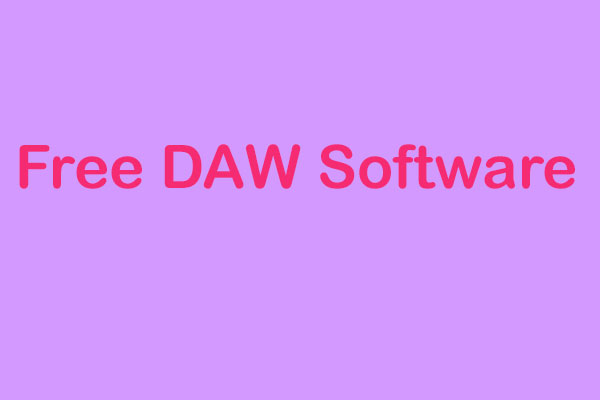
Although not as advanced as other DAWs, including free DAWs like Cakewalk, Garageband is by far the most intuitive to use.
With a straightforward user interface, plenty of included virtual instruments & loops, and even music lessons built in, Garageband is the perfect stepping stone for beginners. There is little to no customization though, so we would not recommend Garageband for experienced producers.
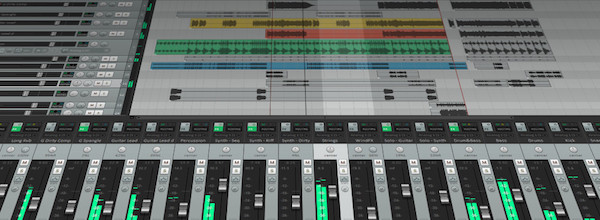
Best DAW for MIDI and film Scoring: Cubase Pro
Supported Platforms: Windows, Mac
Cubase is arguably the most powerful DAW when it comes to MIDI, and it is no surprise that it is the DAW of choice for legendary film composers such as Hans Zimmer and Junkie XL.
Whether you are writing music for television or video games, Cubase comes with many great features that makes it an excellent choice for MIDI composition.
Cubase’s customizable workflow makes it easy to create a template that works for you. You can use this to create a new project with a huge number of pre-organized tracks at the click of a button. Keyboard commands can also be used for fast, seamless navigation between tracks and sessions. For composers who require hundreds or even thousands of tracks per song, this is a huge time saver.
In terms of MIDI functionality, Cubase has one of the smoothest and most intuitive MIDI editors on the market, which is why it is so popular with composers. You can even edit multiple MIDI parts simultaneously, unlike in most other DAWs. Another impressive MIDI feature only available in Cubase is the Logical Editor. Using this tool, you can set filter conditions to trigger custom actions, for example setting a track’s color to red if it contains “Strings” in its name, or randomly altering the velocity of specific MIDI notes to humanize the audio.
Aside from all these advanced features, Cubase is also cross-platform and will work on both Windows and Mac computers. Unfortunately, you do need a USB dongle for it to work, which makes it a bit of hassle to install on multiple machines. Cubase also tends to perform better on PCs than Mac computers, although most Mac users with relatively recent machines should be absolutely fine. Aside from these minor drawbacks, Cubase is a near-perfect DAW for composers.
Best DAW for customization: Reaper
Supported Platforms: Windows, Mac, Linux
For those who value customization, it is hard to find a better DAW than Reaper, especially at a price of only $60 for a full license. With the most dedicated user base out of all the DAWs on this list and an awesome development team that truly listens to its community, Reaper is an increasingly popular alternative to aging industry standards such as Pro Tools.
One of Reaper’s most impressive features is its speed. Unlike some other DAWs, Reaper can be launched in a matter of seconds. This is partly due to its lightweight download size (the installer itself is less than 20MB), but we can also thank the developers for writing highly efficient code. Reaper crashes significantly less than other DAWs do, and its stability is unrivalled when it comes to handling large amounts of plugins and virtual instruments.
Reaper is an incredibly customizable DAW, and with the right amount of tweaking, you can make it do pretty much anything. For example, if you aren’t a fan of the stock interface, you can download user-created skins to change its appearance at the click of a button. There are themes that make Reaper look like Logic or Ableton, as well as a limitless variety of other skins that you can use to tweak the colors, buttons, track panel layouts and more. Another great add-on is SWS Extensions, which allows you to perform complex tasks such as auto-coloring tracks based on their names, creating action loops triggered by custom conditions, and much more.
Other great features include tabbed browsing (so you can open multiple projects at once), creating folders from selected tracks, and even embedding certain plugins into tracks so that you can edit their parameters without having to open the FX window.
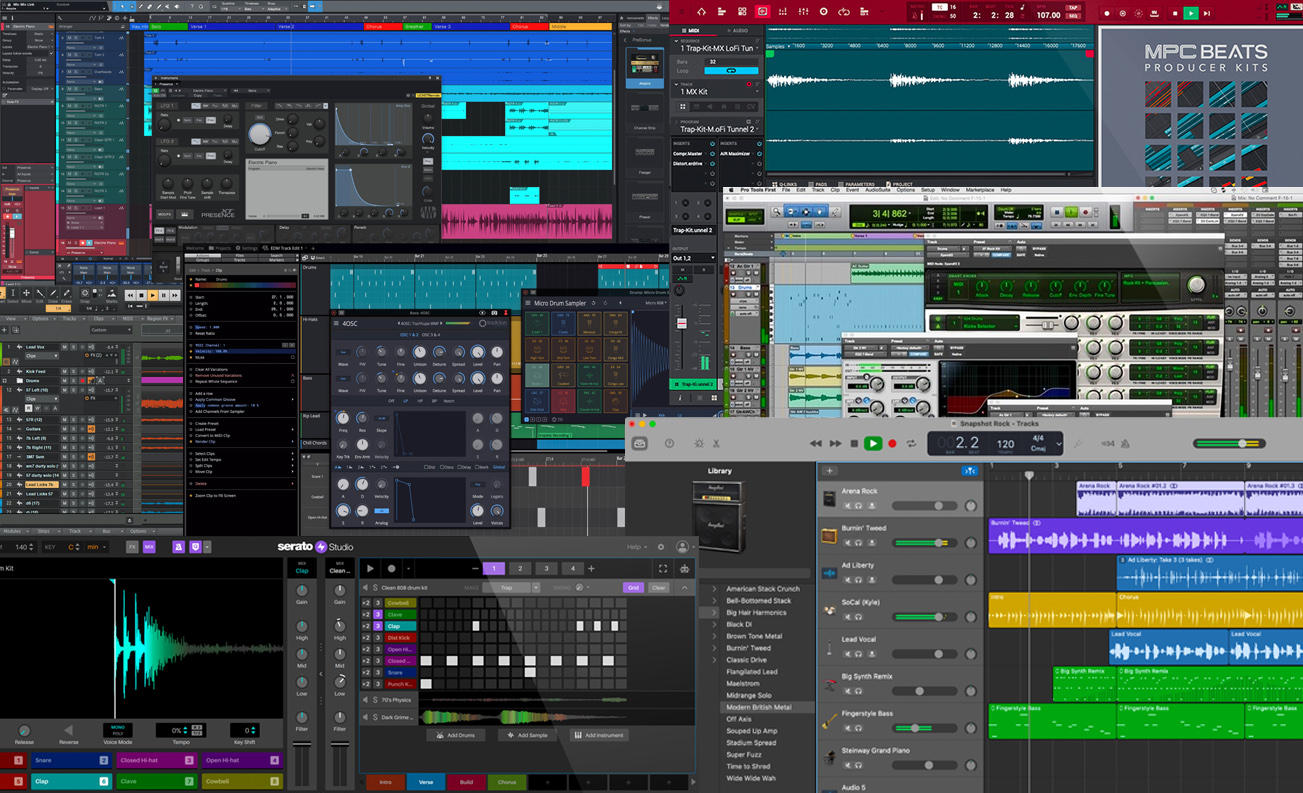
Unfortunately, all of this flexibility and customization comes at a cost. Reaper doesn’t include any virtual instruments, and the stock plugins are nothing to write home about. This means that to get the best out of Reaper, you will need to invest time and money into finding the best plugins and VSTs for you. This isn’t a huge sacrifice, as most musicians would prefer third-party plugins over stock ones anyway, but it could be especially discouraging for newcomers who have never used a DAW before. Instead, Reaper is best suited for those who know exactly what they want out of a DAW and are willing to put in the work to get there..
Best for live performances: Ableton
Supported Platforms: Windows, Mac
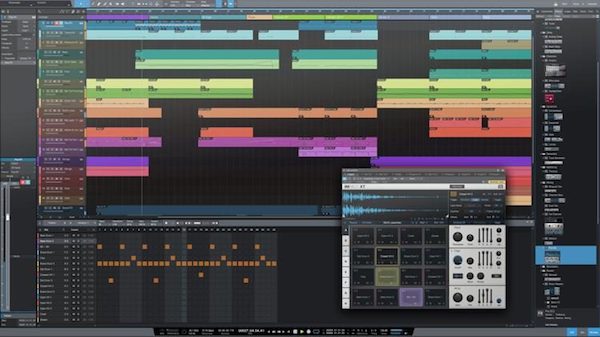
Most people use their DAW for recording tracks in a studio setting. However, there are also many musicians who use a DAW as part of their stage setup when performing. For this scenario, Ableton is by far the best choice.
Ableton features two different views: arrangement view and session view. This dual layout design is different from other DAWs, most of which only have a single interface style. Using Session View, you can create loops and drop them into Arrangement view to make more detailed song structures.
Another great thing about Ableton is the MIDI Map mode, which lets you assign plugins and effects to MIDI controllers on the fly, allowing you to mix your music while performing in real time. You can also assign Follow Actions to specific clips, which will then trigger other clips to play once they finish playing.
For 2021, Ableton Live 11 (coming in Q1) will include new features such linked-track editing, MPE support, live tempo following (to adjust bpm on the fly based on incoming audio), and much more, making it even more epic for live perfomances.
Best workflow: Studio One
Supported Platforms: Windows, Mac
Presonus Studio One is a relatively new DAW, having arrived later to the market than most of its competitors. However, it has quickly gained a loyal following and is one of the most popular DAWs on the market for home studios and young professionals.
What Is The Best Daw For Mac
Besides being packed with features, Studio One’s main benefit is its incredibly intuitive workflow. For example, the built-in drum editor makes it easy to create beats from scratch, while the harmonic editor allows for painless transposing of MIDI notes. Drag and drop techniques can be used in a much easier way compared to other DAWs, making Studio One a great choice for improving your workflow and getting your edits done quicker.
What’s even better, Studio One comes bundled with Melodyne 5 Essential – an excellent plugin used by Grammy-winning producers for pitch and time editing. Melodyne Essential by itself usually costs $99, so having it bundled with Studio One represents great value for money.
If you will be doing a lot of editing tasks as opposed to recording demos or doing live performances, Studio One is the perfect DAW for you.
Best design: Logic Pro
Supported Platforms: Mac only
If there was one DAW that you could purchase and use straight out of the box without third party plugins or make any major adjustments, it would be Logic.
Being an Apple program, the user interface is sleek, easy to use and highly intuitive. Although it has a relatively simple learning curve, Logic is not only for beginners, and is used by plenty of professional artists and producers around the world. Logic is a DAW you can purchase as a complete novice, and still continue using years later when you are an advanced user.
Although not as powerful as the one featured in Cubase, Logic’s MIDI editor is still plenty capable and should handle most tasks with ease. You can create custom MIDI commands, transform MIDI notes and humanize your MIDI for a more realistic performance.
Another benefit of Logic is the wide array of included sounds and instruments. Logic’s has some of the best-sounding stock plugins out of any DAW, and will save you the time and effort of having to search for individual third party plugins. Simply download Logic and get started making music immediately. Logic also comes with Apple Loops, which are pre-recorded musical phrases that you can drag and drop into your project to create repeating motifs. These are even good enough to include in your final mix – just ask artists like Rihanna, Usher and Grimes, who have all created smash hits using Apple Loops.
Logic includes other neat features such as Flex Editing for pitch and timing adjustments, and track freezing to free up resources when plugins aren’t being used. Overall, Logic is simply a pleasure to use. Unfortunately, it is only available on Mac, so just like Apple users with Cakewalk, Windows fans will have to look elsewhere.
Conclusion
Choosing a DAW is a personal choice, and there is no one size fits all solution. The most important thing is to pick one that best suits your needs and then stick with it. You may be tempted to splurge on a bunch of different DAWs just to have more options, but this rarely makes you a better producer and will instead distract you from reaching your musical goals. Focus on learning one DAW until you know it like the back of your hand. That way, the next time you have a great song idea or need to mix a track on a tight schedule, you will be able to do so effortlessly using your DAW of choice.
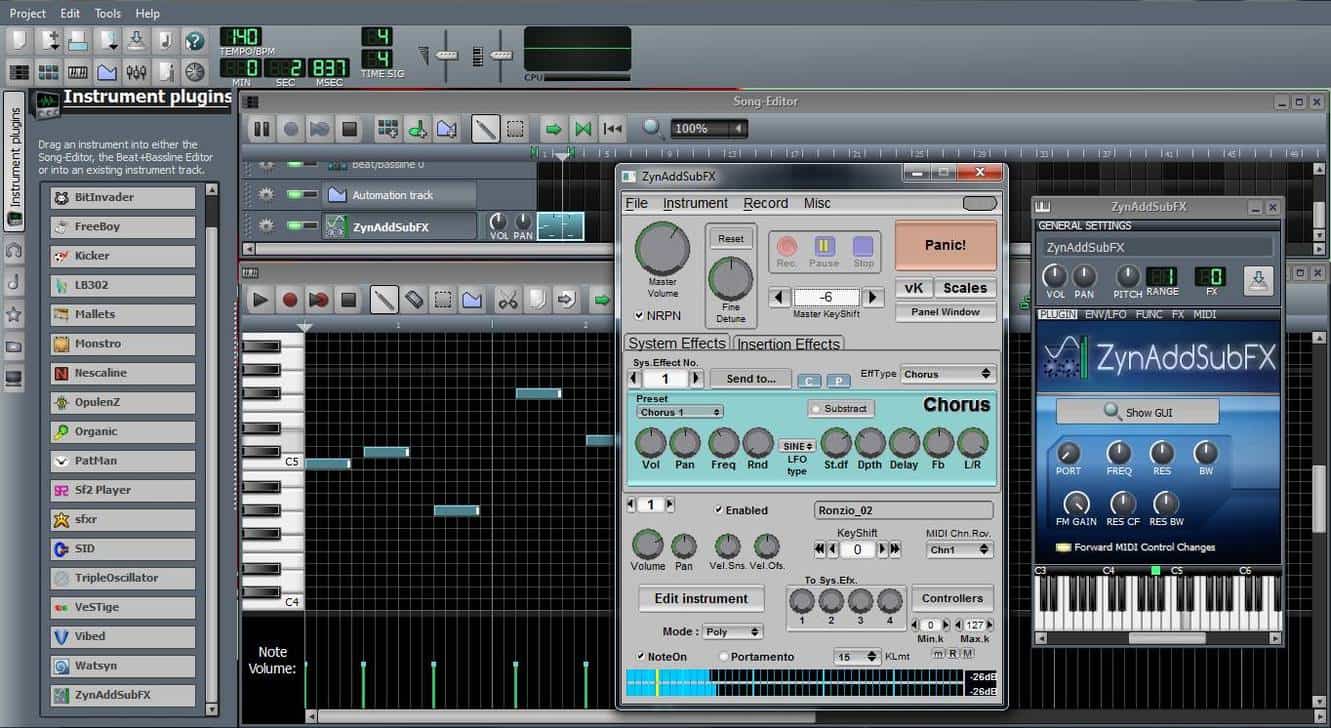
What Is The Best Free Daw
By the way, both the Soundbrenner Pulse and Core are compatible with most major DAWs including the ones on this list! This means you can sync your wearables to the bpm of your DAW and record music without the annoying sound of a click track. Have a look at our DAW Setup Guide for more information, as well as a list of which DAWs are supported.
Soundbrenner is a company dedicated to help musicians stay focused on what truly matters: their music. Click here to find out more about our products.
Best Free Daw For Macs
Got a question about the Soundbrenner wearables? Reach out to us at [email protected], we’re happy to help!